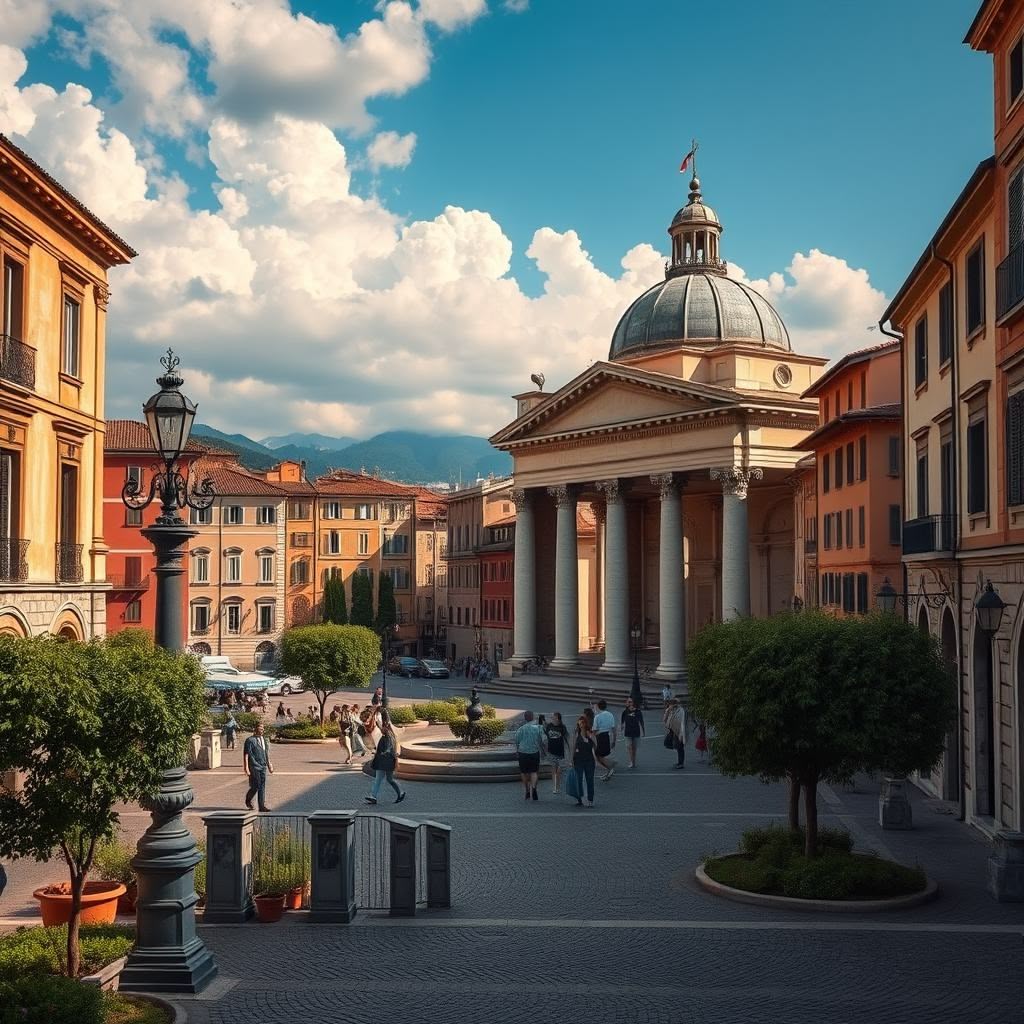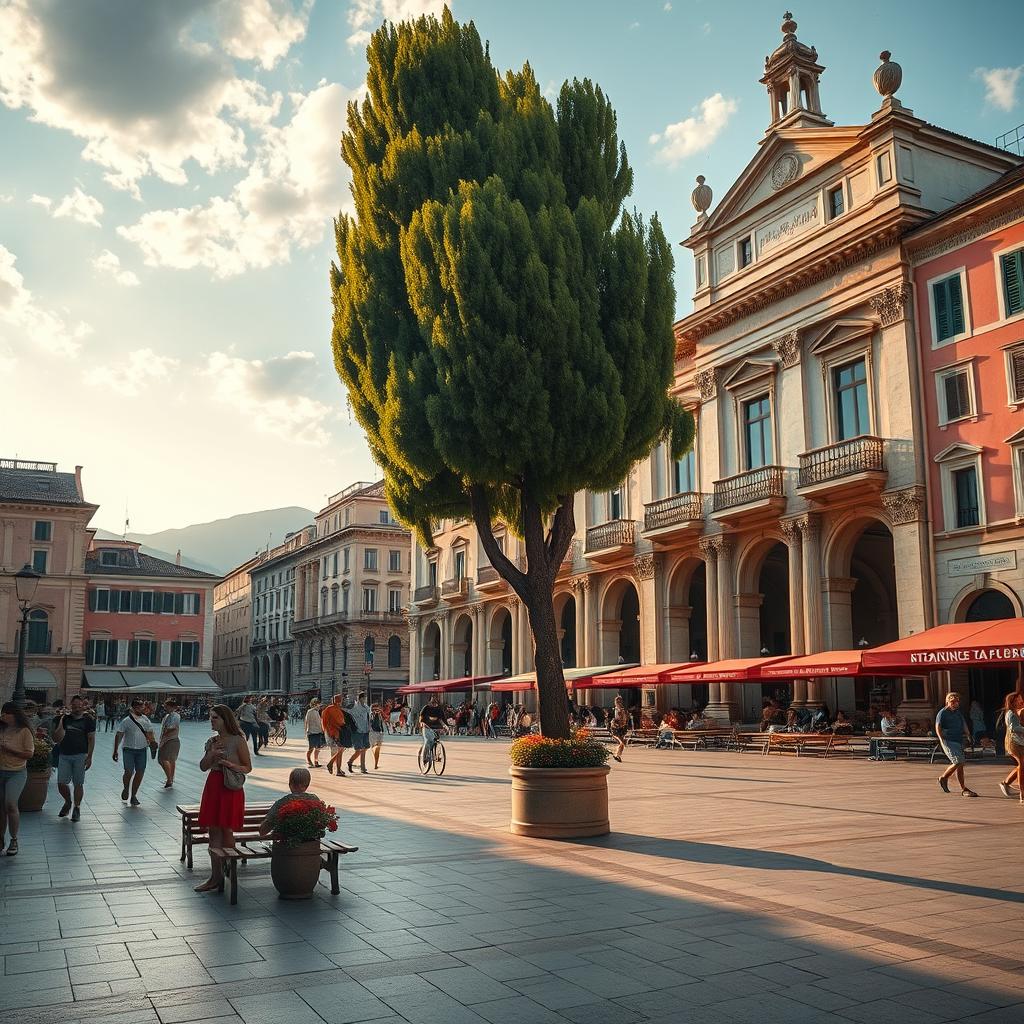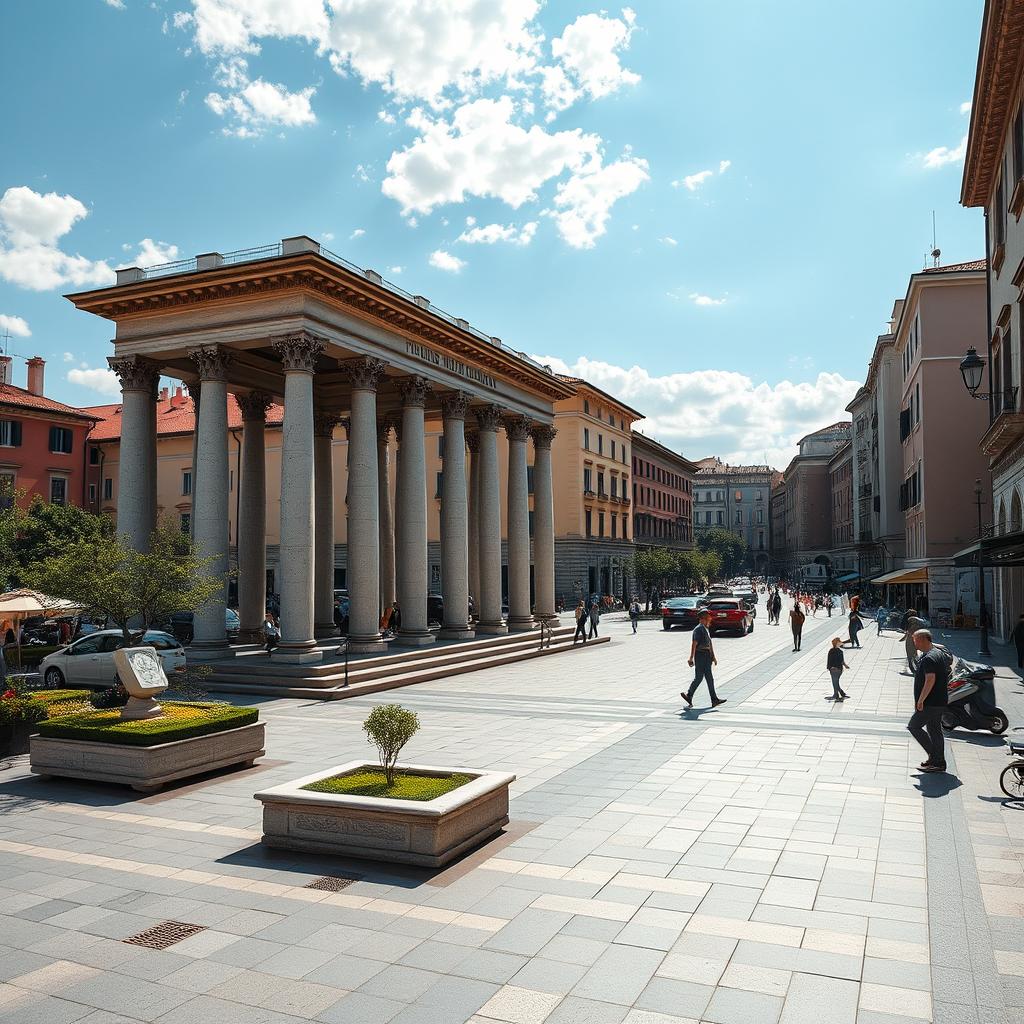The journey of public spaces in Italian cities, from forums to piazzas, is a captivating story that encompasses history, culture, and urban design. These spaces have always been the center of community life, evolving with society’s needs while still playing a vital role in city dynamics.
- Forums were grand civic centers in ancient Rome that combined political, religious, and social functions.
- Over time, these forums transformed into piazzas, which are smaller squares that include markets, churches, city halls, and social gatherings.
- This change reflects shifts in governance, religion, commerce, and community interaction within Italian cities.
Understanding this evolution is crucial to appreciating how public spaces shape urban life today. The piazza remains a vibrant symbol of community identity and multifunctional use. By tracing its roots back to the Roman forum, you gain insight into the enduring importance of these spaces as dynamic hubs for social connection and cultural expression.
Historical Background
The Roman forum was an important public space in ancient times, serving as a central location for political, religious, and social activities. It had various functions that were crucial to the society of that era.
Key points regarding Roman forums:
- Political Center: Forums were the heart of political life in Roman cities, hosting public speeches, elections, and official ceremonies. This political significance was further emphasized by legal frameworks such as the Twelve Tables, which codified complex legal practices.
- Religious Significance: Temples dedicated to various gods were common features within forums, symbolizing the spiritual dimension of these spaces.
- Social Gathering Place: Forums were bustling with activity, serving as markets, meeting points for social interactions, and venues for cultural events. Entertainment in Ancient Rome, such as gladiators and chariot races, played a crucial role in shaping social relationships and political authority (Men of Pompeii).
As Italian cities developed over time, there was a shift from forums to piazzas, indicating a change in how urban areas functioned. This change was driven by evolving societal needs and structures.
Insights into the evolution of public spaces:
- Localization: Piazzas became more localized squares compared to the grand scale of forums, focusing on specific community needs and functions.
- Diversification: Unlike forums primarily dedicated to governmental and religious activities, piazzas accommodated commercial exchanges, social gatherings, and civic events.
- Adaptation: The shift to piazzas reflected a more diversified urban landscape that catered to the broader spectrum of daily life activities within Italian cities.
The transition from Roman forums to Italian piazzas signifies a significant historical shift in the design and purpose of public spaces, mirroring the evolving needs and values of urban societies over time. This evolution is reflective of broader trends seen throughout history, including the rise and fall of the Roman Empire, which left an indelible mark on politics, culture, and society globally. Additionally, it’s important to note that agriculture played a crucial role in this economic transformation (Men of Pompeii), serving as a key driver of Rome’s economic and social development during both the Republic and Empire periods.

The Role of Piazzas in Italian Cities
Italian piazzas serve as vibrant, multi-functional centers that integrate political, religious, and social dimensions within urban life. Unlike the Roman forums, which primarily emphasized political authority and monumental public administration, piazzas evolved to address a broader spectrum of community needs.
Functions of Piazzas
1. Political Functions: Piazzas act as gathering places for civic engagement and public discourse. City halls (palazzi comunali) often border these squares, symbolizing local governance and communal decision-making. Public speeches, protests, and celebrations take place here, maintaining the tradition of political interaction initiated by forums but on a more localized scale.
2. Religious Significance: Many piazzas feature prominent churches or cathedrals that anchor their spiritual importance. These structures transform the square into a sacred space where religious ceremonies, festivals, and processions occur.
3. Social Interactions: Piazzas function as social hubs where residents meet to dine, converse, and relax. Markets set up in these spaces provide economic activity alongside leisure. Cafés spilling onto the pavement invite people to linger, fostering community bonds.
A comparison between forums and piazzas reveals a shift from grandiose centers designed for empire-wide administration to intimate spaces tailored for localized human experience. Forums focused on monumental architecture — temples, basilicas, senate houses — serving the entire Roman citizenry. Piazzas emphasize accessibility and multifunctionality with mixed uses blending governance, worship, commerce, and recreation.
The evolution highlights how Italian cities adapted their public spaces to changing social structures and urban rhythms while preserving their role as focal points for collective life.

Design Elements of Italian Piazzas
Italian piazzas are unique not just because of their cultural importance, but also due to specific design features that define their character and purpose. These elements showcase a combination of clever engineering, artistic creativity, and urban planning ideas developed over many years.
Engineering Features
Engineering elements are fundamental to many piazzas. Clever water management systems supply fountains, which serve both decorative and functional purposes. Aqueducts and underground channels bring fresh water, enabling elaborate fountains that became central visual anchors. The presence of water features often symbolizes life, prosperity, and civic pride, while providing cooling relief in warm Mediterranean climates.
Water Features
Water features like fountains are an essential part of the personality of Italian piazzas. They often occupy central positions, such as the famous Fountain of Four Rivers in Piazza Navona, designed by Gian Lorenzo Bernini. These fountains are more than decoration; they mark key spatial points, encourage social gathering, and contribute soundscapes that enhance ambience. Their designs combine sculptural artistry with hydraulic engineering, demonstrating a sophisticated understanding of form and function.
Strategic Placement
Strategic placement governs how piazzas interact with their urban surroundings. Unlike Roman forums located at major crossroads emphasizing connectivity and visibility on a grand scale, piazzas tend to integrate closely with adjacent buildings—churches, palaces, markets—creating intimate yet vibrant nodes within neighborhoods. This spatial arrangement supports diverse uses: commerce on one side, religious ceremonies on another, political gatherings nearby. Streets feeding into the piazza are often deliberately narrow or angled to frame views and direct foot traffic into these communal spaces.
Key Design Principles
Key design principles include:
- Central focal points, often a fountain or monument
- Enclosure by architecturally significant buildings, providing scale and definition
- Balance between open space and surrounding structures, promoting accessibility while maintaining intimacy
- Incorporation of natural elements, such as trees or greenery enhancing comfort
Exploring the evolution from forum to piazza reveals how these design elements adapted to changing social needs without losing their role as essential gathering places in Italian cities. The transformation from the patricians’ luxury during the Roman Empire to the communal spaces we see today is a testament to this adaptability.
In recent times, there has been a growing emphasis on creating spaces that promote well-being within these urban environments. This has led to the incorporation of concepts from WELL certification, which focuses on enhancing the health and well-being of individuals through better design choices in architecture and urban planning.

Cultural Transformation in Public Spaces
The impact of religious changes on the design and use of public spaces in Italy has been profound, particularly seen in the transformation of Roman temples into Christian churches. This shift not only altered the architectural landscape but also redefined the cultural significance of these spaces.
1. Christianization and Architectural Adaptations
The conversion of Roman temples into Christian churches marked a significant shift in religious practices and beliefs. It led to the repurposing of sacred sites and the incorporation of Christian symbols and motifs into existing structures.
The architectural transformation from pagan temples to Christian places of worship reflected a cultural amalgamation where elements of both traditions coexisted, showcasing a unique blend of artistic styles and religious expressions.
2. Case Study: Piazza Navona
Piazza Navona stands as a prominent example of this cultural evolution. Originally constructed as a stadium in 86 CE, it underwent a remarkable transformation during the Baroque period.
The grandeur of Piazza Navona lies not only in its architectural beauty but also in its symbolic significance. The Fountain of Four Rivers, designed by Gian Lorenzo Bernini, embodies the fusion of art, religion, and history, encapsulating the essence of this cultural metamorphosis.
By exploring such iconic examples like Piazza Navona, we can delve into the intricate layers of history and observe how public spaces have been shaped by religious transitions. This legacy is deeply intertwined with the broader narrative of Ancient Rome, whose influence continues to shape urban life in Italy today. From its inception as a small city-state to its transformation into a vast empire, the legacy of Ancient Rome remains a cornerstone of Western civilization.
Contemporary Significance of Piazzas
Piazzas in Italian cities hold a vital role in shaping community identity and enhancing urban livability today. These public spaces act as essential components that bring together residents and visitors, fostering a sense of belonging and unity within the community. They serve as open gathering spots where people from diverse backgrounds can interact, socialize, and engage in various activities, contributing to the cultural richness of the city.
The Role of Public Art
The presence of public art within piazzas plays a significant role in elevating the aesthetic appeal and cultural vibrancy of these spaces. Art installations, sculptures, murals, and fountains not only enhance the visual landscape but also serve as focal points for artistic expression and storytelling. Public art installations often reflect the history, values, and aspirations of the community, creating meaningful connections between people and their surroundings. This connection to history can be traced back to Roman architecture, which has significantly influenced modern urban design.
Contemporary artists continue to explore site-specific installations that challenge perceptions of reality, much like Alicja Kwade’s work at Stanford’s Science and Engineering Quad which suggests alternate realities through her art.
Versatile Hubs for Community Activities
Piazzas also function as resources for a wide range of activities that cater to different aspects of daily life. From hosting markets and festivals to providing spaces for performances, exhibitions, and recreational events, these public squares offer opportunities for social engagement, entertainment, and relaxation. The dynamic nature of piazzas ensures that they remain versatile hubs that adapt to the evolving needs and interests of the community.
Legacy of Roman Engineering and Law
Moreover, the importance of these public spaces goes beyond their immediate function. They are a testament to Roman engineering feats that have changed the world, effectively connecting far-flung regions and ensuring effective governance and cultural exchange. The legacy of Roman law, which originated in ancient Rome around 753 BCE, is still relevant in various legal systems today.
Influence on Art and Culture
In addition to their architectural significance, piazzas are also deeply intertwined with art and culture in ancient Rome. The artistic expressions from this period have heavily influenced contemporary art forms. Thus, understanding the historical context of these public spaces enriches our appreciation of their contemporary significance.
Conclusion
Public spaces in Italian cities reveal a rich history of urban development. From the grand Roman forums to the cozy and versatile piazzas, these areas have always shown an impressive ability to adapt to the needs of the community.
- Forums served as important political and religious centers.
- Piazzas evolved into lively places, combining social activities, trade, and culture.
- Modern piazzas continue to be crucial urban centers that promote identity and connection.
Studying how public spaces have evolved from forums to piazzas in Italian cities shows us that they are still important today. These lively places bring together history and modern life. Their capacity to change while still holding cultural significance guarantees that they will always be essential in shaping how communities interact within the city. This ability to adapt not only respects tradition but also encourages future growth and livability in Italy’s urban areas.

